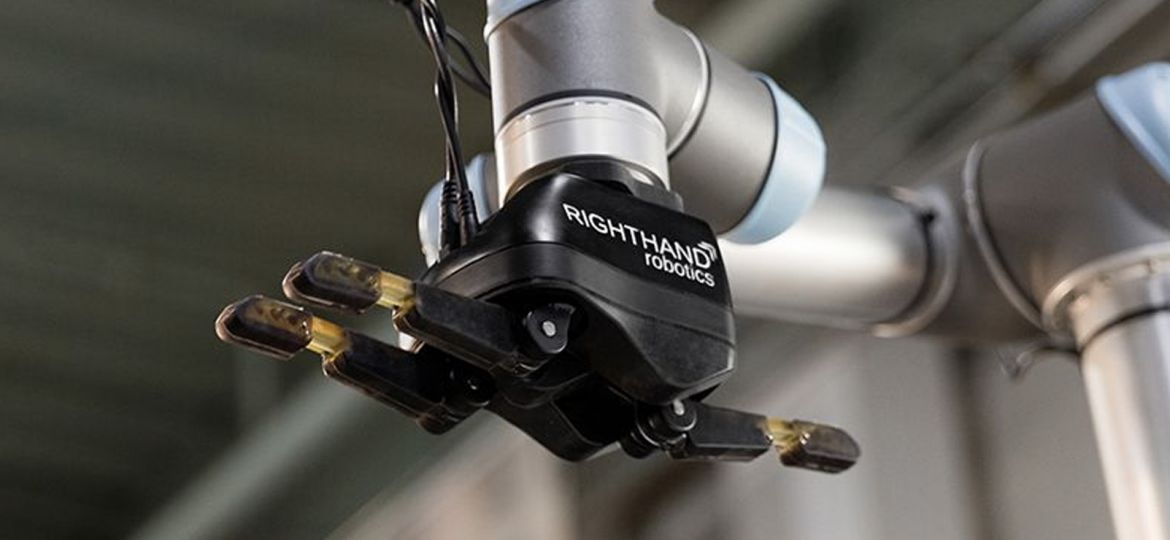
WHY THIS MATTERS IN BRIEF
- Robots are now as fast and accurate as human workers when it comes to identifying and picking goods from warehouse bins and shelves, and that’s a problem if that’s your job
Buried deep within a building in Somerville, Massachusetts, a robot arm spends all day, every day picking up random objects, everything from bananas and bars of soap to boxes of tissues and Asprin, from a conveyor belt. It’s not as much fun as it sounds… but the aim of the program is to drive a revolution in robotics that will one day, one day soon, help robots replace human pickers who do the same job.
The project, which draws on advances in artificial intelligence (AI), machine vision, robotics and teleoperation, and which also draws on machines ability to collaborate, communicate and learn via new hive mind systems, that even Google and their robots are playing around with, that leverage AI and the cloud, looks set to transform warehouse fulfilment in the coming years.
The new robotic picking platform, which uses a combination of a hybrid gripper and machine learning, was developed by RightHand Robotics, and it can handle a wide variety of objects faster and more reliably than today’s human equivalents.
The company launched the new platform, called RightPick, earlier this month and it’s targeting the clothing, electronics, grocery and pharmaceutical industries.
Earlier this year the company’s cofounders, Yaro Tenzer and Leif Jentoft, showed off several other prototypes they had developed. Besides the conveyor belt scenario, they’re also developing picking systems designed to match that of a company that sends packages of cosmetics tailored to individual customers. The company’s system could pick a customer’s items from several bins attached to a circular carousel. They also showed off a system learning to grasp a particular object by trying, over and over again, to move items piled up in one bin to another bin.
Picking different types of objects piled into a bin may sound simple, but it remains a huge challenge for robots, especially if the objects are unfamiliar. Humans are able to guess how an occluded object looks and feels, and we apply years of grasping experience to the task.
Fulfilment centers typically handle a range of products and up until now that’s made them hard to automate. Even automation behemoth Amazon, for example, has only been able to automate a relatively small part of its warehouse operations so far.
RightHand’s system grabs objects using a fingered hand that has a suction cup at its center that has a camera embedded within it to help it figure out which fingers to use and how to grasp the item, and over time, thanks to machine learning it’s learning and getting better all the time. Furthermore, the skills learned by one robot can be fed back and shared with all of the other robots on the network via the hive mind.
If the system does encounter a problem it can’t solve though then RightHand’s engineers can log into the system remotely to solve problems, or to help a company train the robot to pick a new object.
While it’s difficult to gauge the reliability and speed of such a system, or to tell how it might deal with any number of awkward new objects, so far it’s shown itself more than capable of picking up the common objects you might find in a grocery store about as fast as a person could.
Ken Goldberg, a professor at University of California Berkeley (UCB) and an expert on robot vision, manipulation, and learning, says it remains very difficult for robots to rummage for items in a cluttered bin. He says he is impressed by the hybrid gripper and adds that applying machine learning via the cloud, so that every robot deployed by the company gets smarter over time, makes a lot of sense.
“This is a clever mechanism,” Goldberg says, “these guys are smart.”
At the start of this month, RightHand received $8 million in Series A funding, and the company’s early investors include Playground Global – a Palo Alto incubator and venture fund created by Andy Rubin, who led the creation of Google’s Android smartphone operating system and who later managed the company’s foray into robotics with the acquisition of a number of startups working on various robot technologies.
Over the past year or so, the company has been working with a number of large logistics companies and retailers to prove the reliability of its system.
“When we saw the tech and the progress they’ve made on the business side, we got really excited,” says Mark Valdez, a partner at Playground Global, “there’s an opportunity to build a virtuous cycle and a network effect for some of these software defined hardware products.”
Besides Amazon, many other companies are trying to develop robots capable of grasping a range of objects from a disordered pile.
“This is a major frontier for robotics right now,” says Goldberg of UCB.
As we’ve seen many times before it’s inevitable that this frontier will be conquered, and as for what that means for the tens of millions of pickers and warehouse staff who’ll suddenly find themselves having to compete with these automaton’s well, you know how that ends…
















